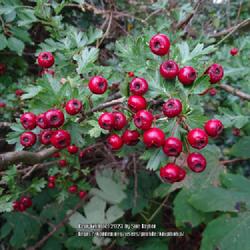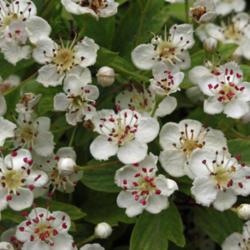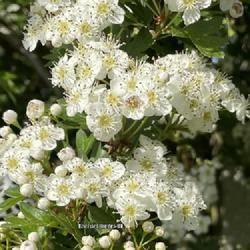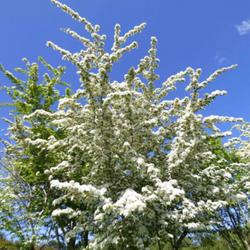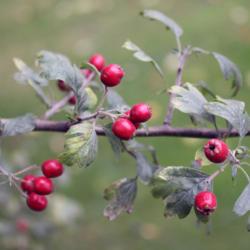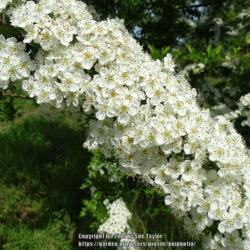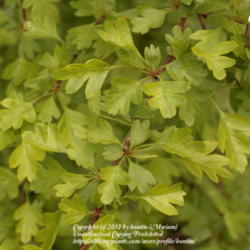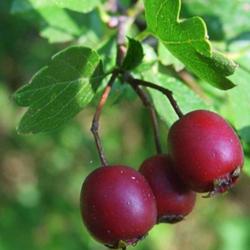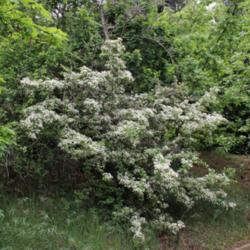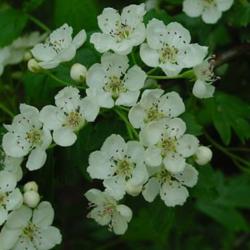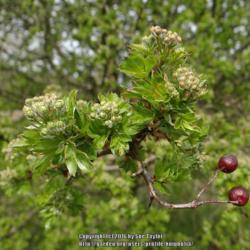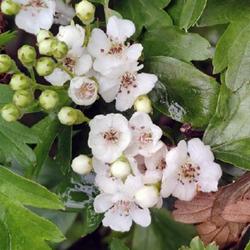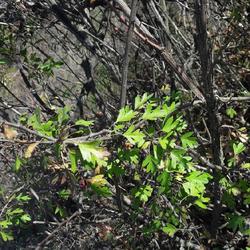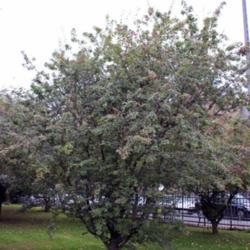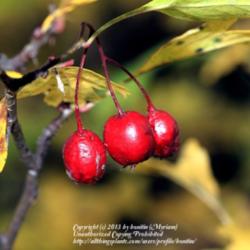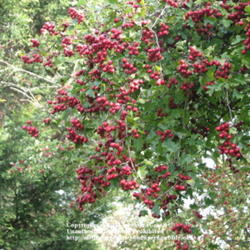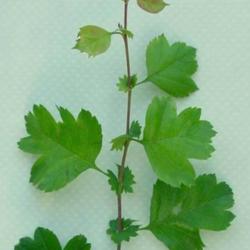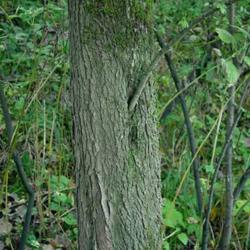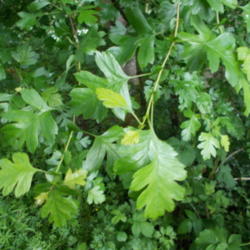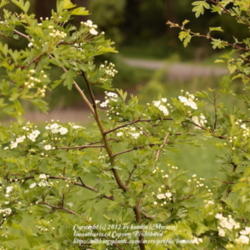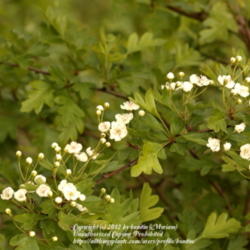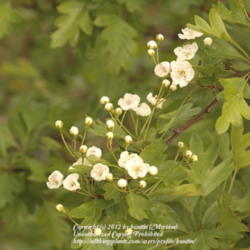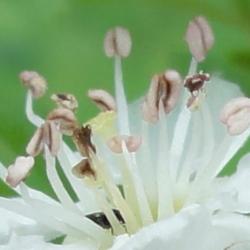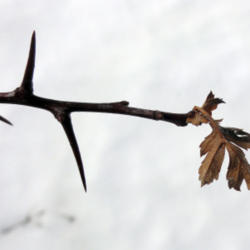Posted by
okus (Lincolnshire, UK) on Sep 22, 2011 6:56 AM concerning plant:
The true English/British Hawthorne, a fast growing, thorny British native deciduous hedging plant with dark glossy green leaves. In spring, clusters of prominent scented white flowers open within a few days of the initial buds appearing, followed by glossy red haws in autumn. These sustain native bird life. The Hawthorn leaves are bright green and tinged with red and make attractive deciduous hedges full of autumn colour.
Traditionally layered as part of the autumn 'hedging and ditching' process, they make a dense impentrable, living stock-proof fence.They provide nesting habitat for birds and winter food as well as attracting bees in the spring.
Posted by
skopjecollection (SE europe(balkans) - Zone 6b) on Nov 1, 2022 12:45 PM concerning plant:
A thorny, often shrubby perennial plant, found in heath and in mountain meadows. Its unusually shaped leaves set it apart from any lookalikes, and the showy red berries are a give-away in autumn. Taste is that of a dry, almost sweet, oily avocado.
Eating multiple fruits at one will give some sort of berry aftertaste in the mouth, similar to its tea.
Posted by
Mindy03 (Delta KY) on Apr 1, 2012 3:33 PM concerning plant:
Honey bees get nectar, yellow brown pollen and honeydew from this plant.
Posted by
Bonehead (Planet Earth - Zone 8b) on Oct 2, 2013 1:41 PM concerning plant:
Introduced to the Pacific Northwest from its native England, but now often included on PNW native listings. Found in the wild west of the Cascade Mountains from Alaska to California, and also widely distributed in eastern North America. There is apparently a true PNW native hawthorne that does not have lobed leaves, which I have never run across. This variety has thick leathery lobed leaves, white stinky flowers, sharp thorns, and small purple-red fruit with large seeds. Birds eat the fruit then plant the seeds. Not on an invasive list as far as I can tell.

